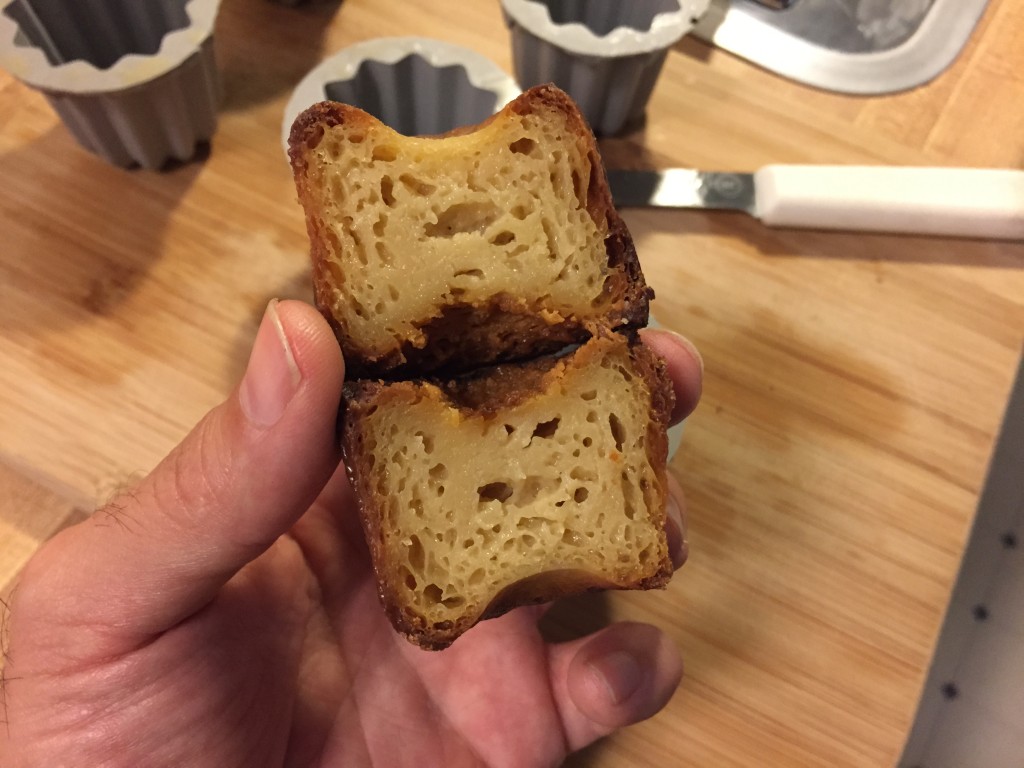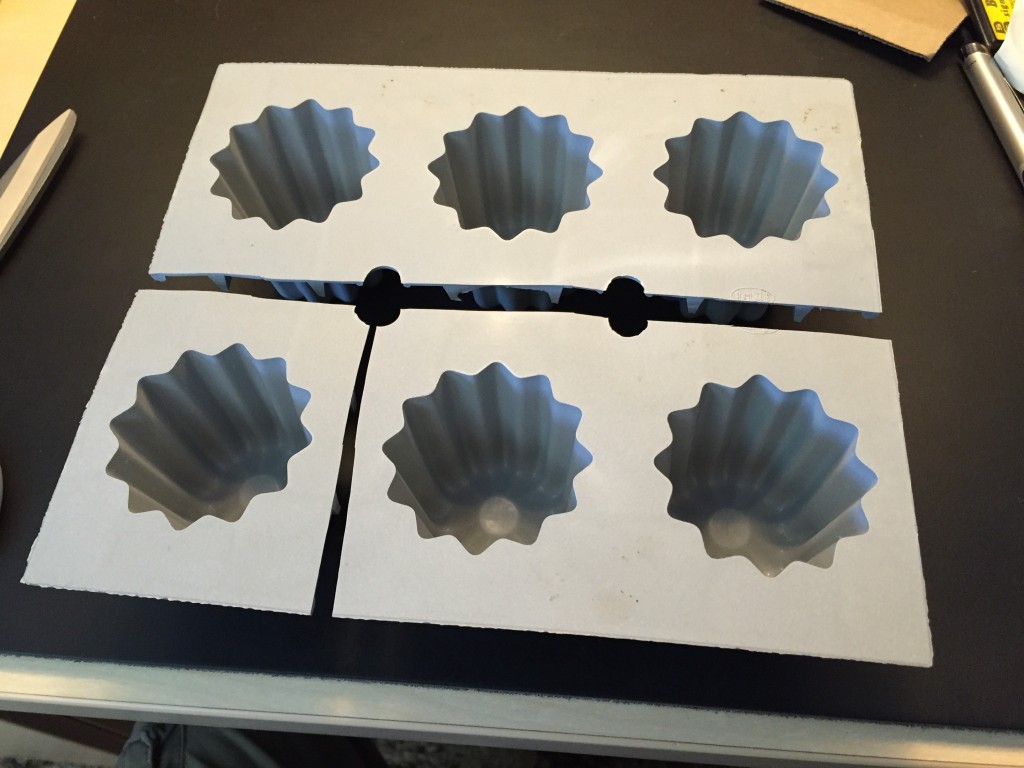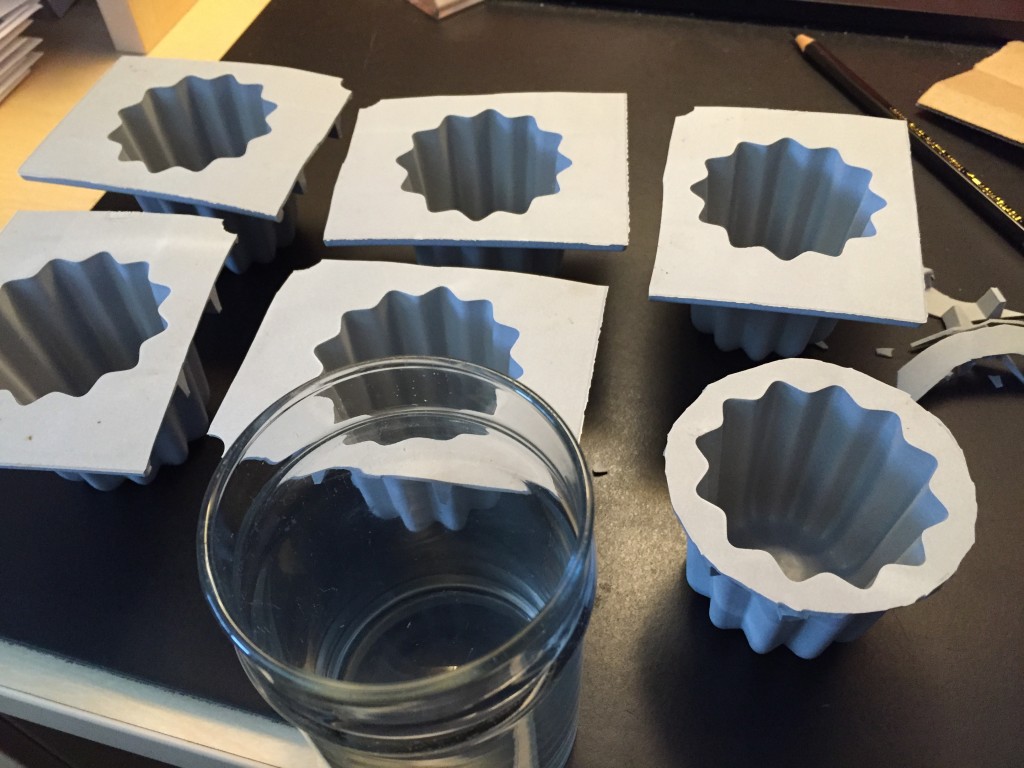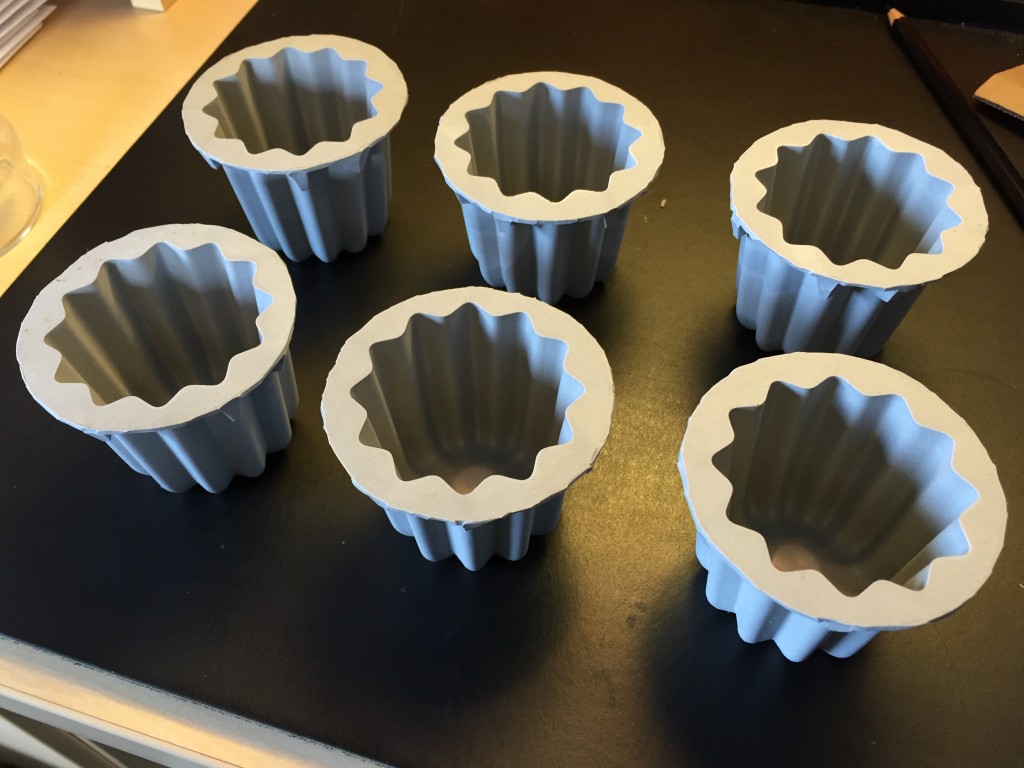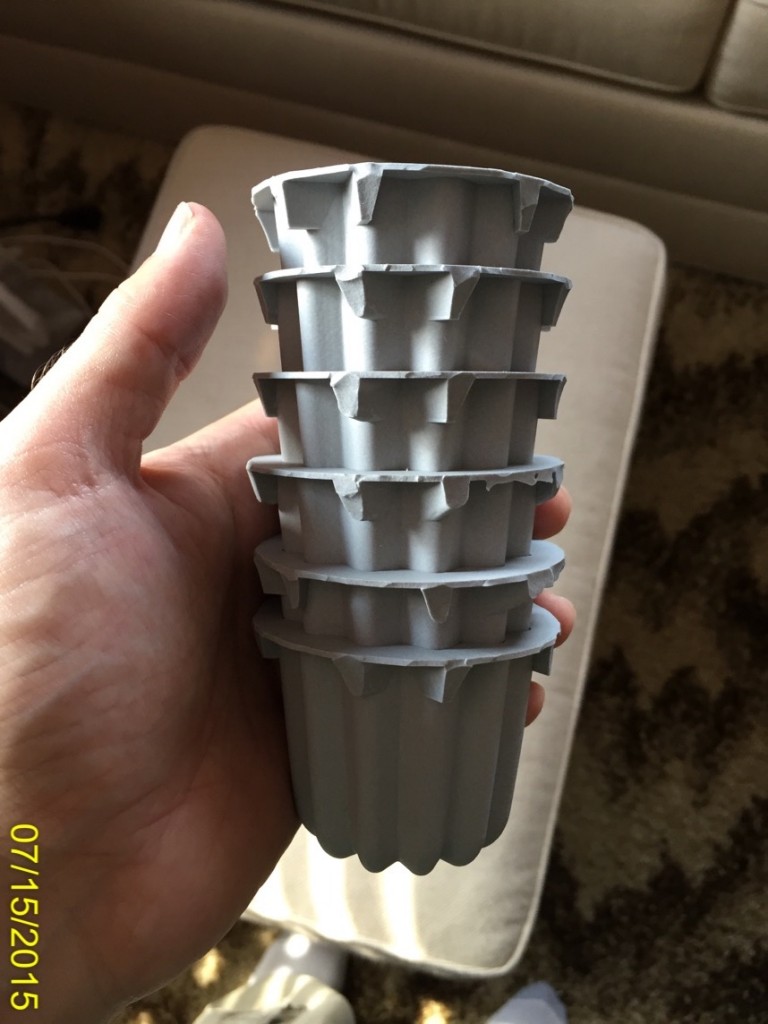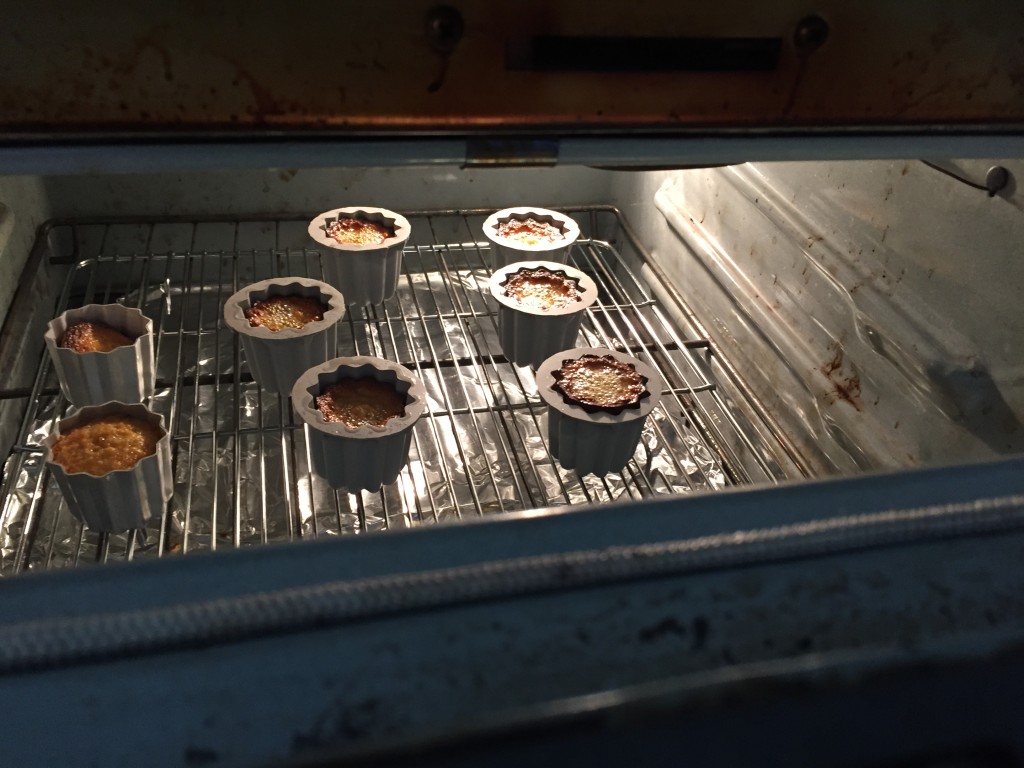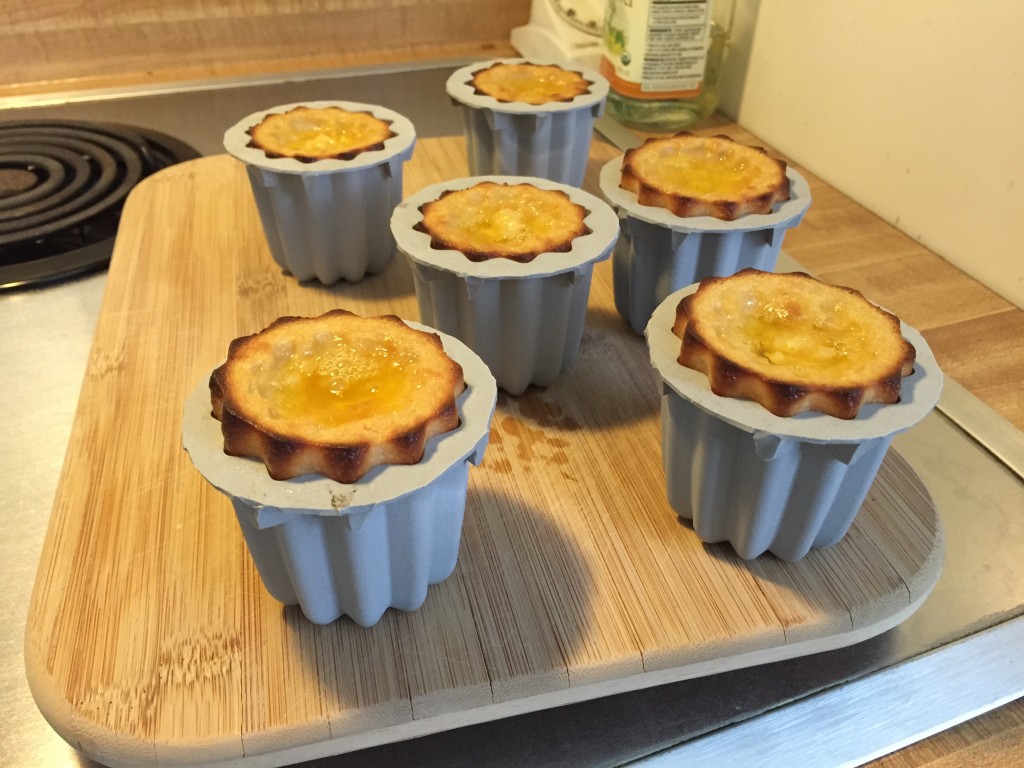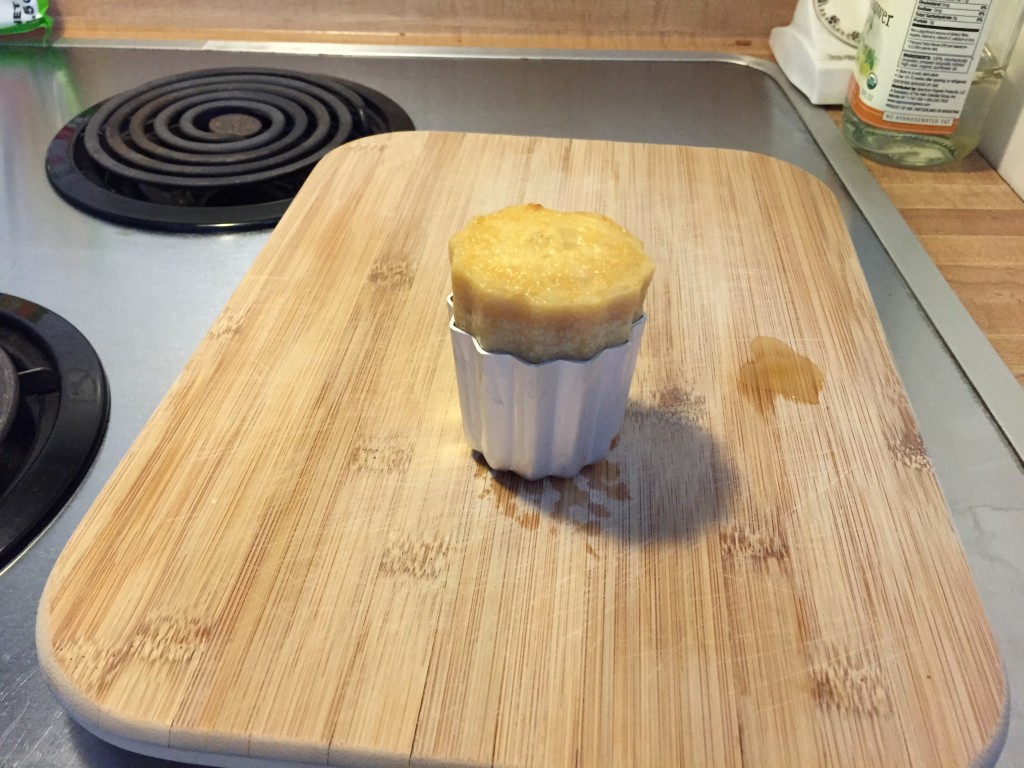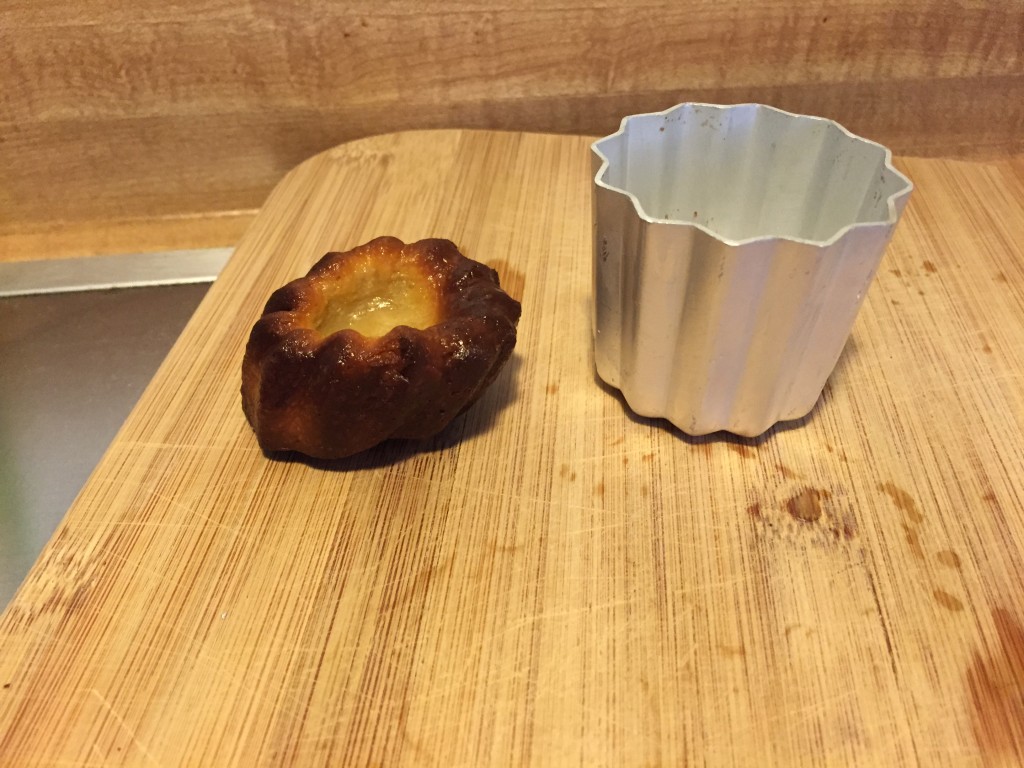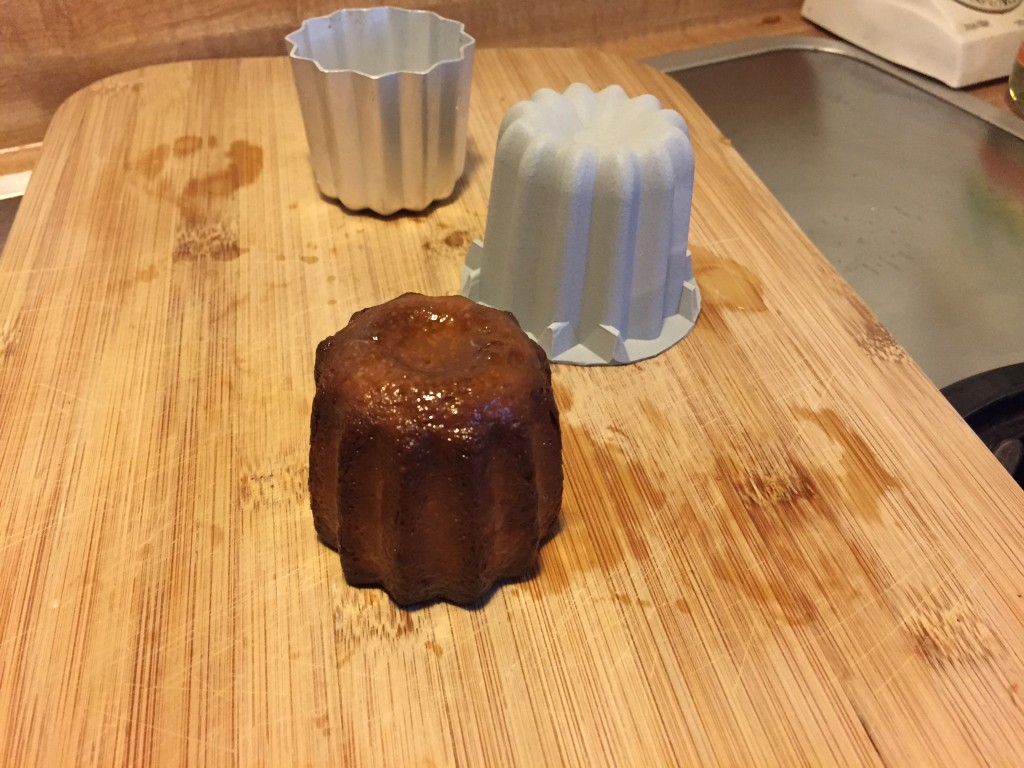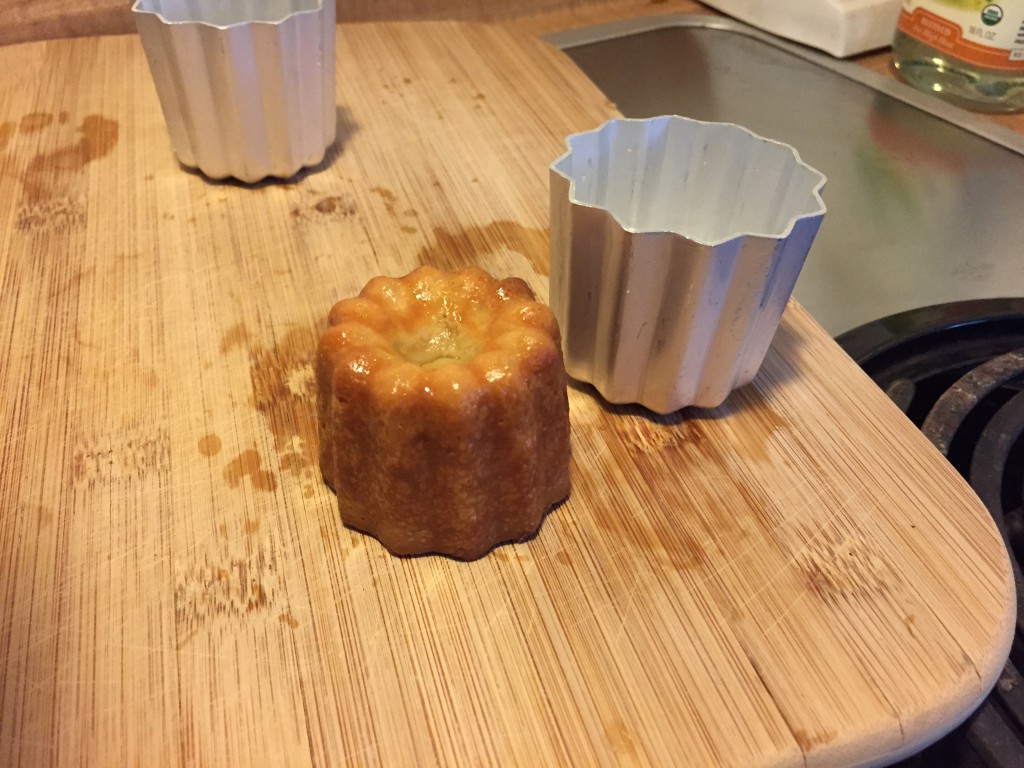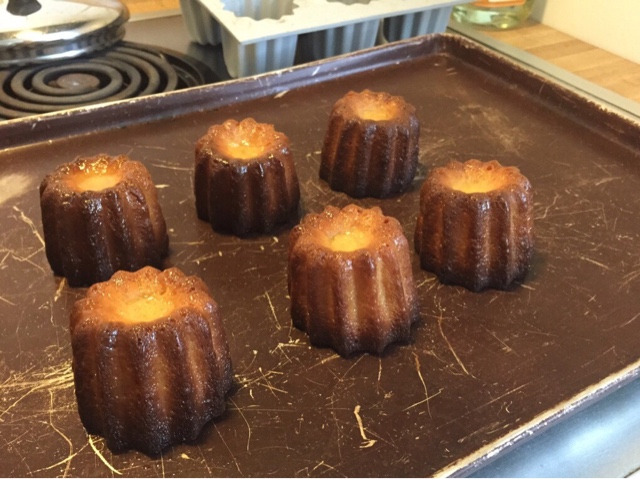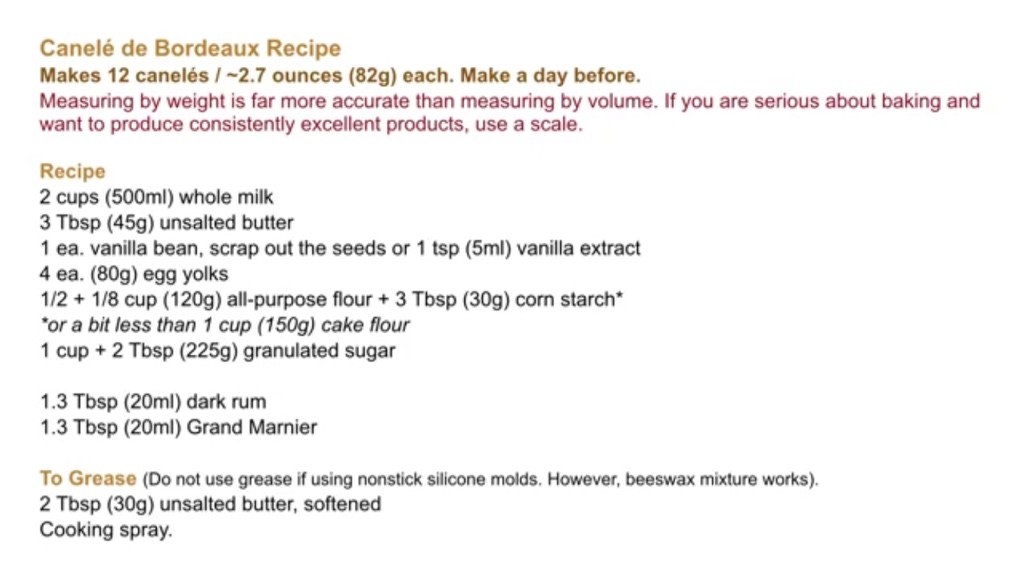Third Attempt
This time I went back to the first recipe. I only used egg yolks reduced the amount of flour and sugar. I notice that when I use just yolks the crust is firmer. It’s like a tough shell with a stark soft custard inside. Using egg whites and yolks together in other batches provided a more uniform transition between the outside and inside. Which I prefer.
Prep, this amount filled 7 molds 1/2″ from the top of each mold and there was left over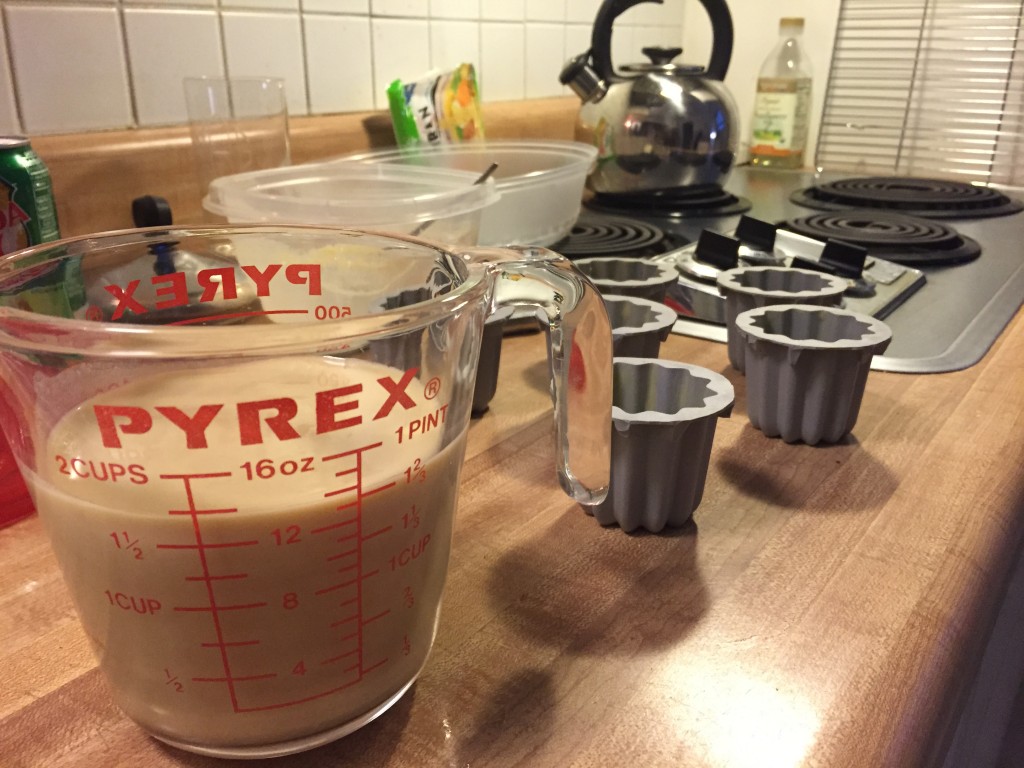
Here is the look of the top and bottom of this batch. The one on the right was filled higher then the others and no beeswax was used in the mold. Notice the bottom is flat.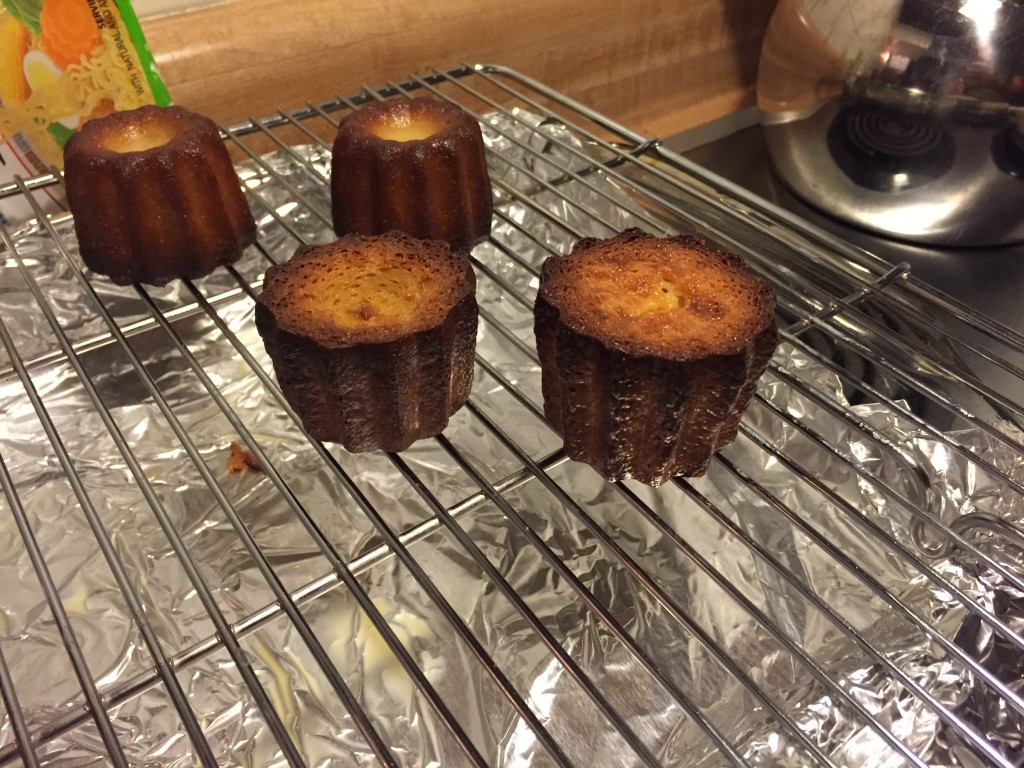
I made one without beeswax. This was interesting. The bottom formed more properly. It was flat, not quite rounded. I think when I use the beeswax it pools in the center and causes it to cave in a bit. Next time I will use a super thin coating of beeswax and may only apply it partially up the walls of the mold. Below is the one without beeswax. It came out wetter you can see the shine.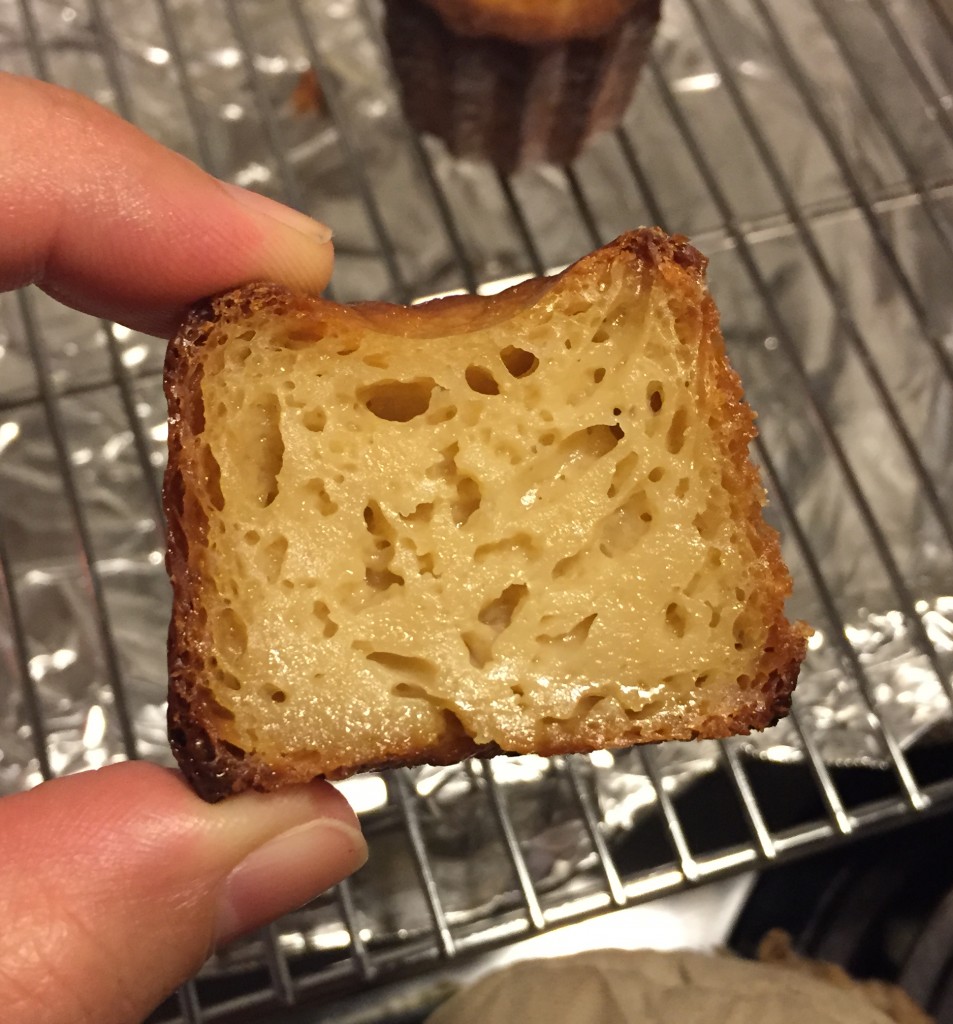
I took out this video because I was using too much wax and butter in the molds. I’m explaining in this video the technique I used to coat the inside of the molds with hot beeswax. I kept the other stove burner warm. As I worked the beeswax would firm up in the pan. When it did I placed pan back on the warm burner to soften it again.
Update to the video Even the coating that I demonstrate in this video is too thick. I now brush off as much wax-butter mix from the brush on the side of the pan before brushing in the mold.
http://www.finecooking.com/item/55415/the-science-of-baking-cookies
Notes: making it with no whites made the outer crust firmer. The next day they were spongy and wet. Too much wax makes the bottom concave while baking. Baked inside of glass pyrex this time.
Here is the recipe I’m using
This post is part of a 7 part series on Canele
